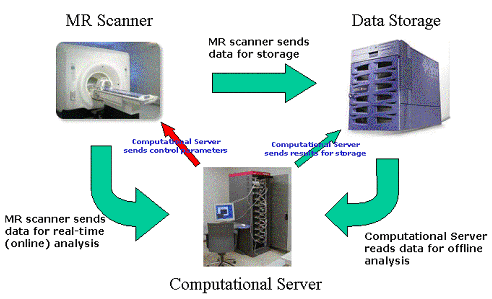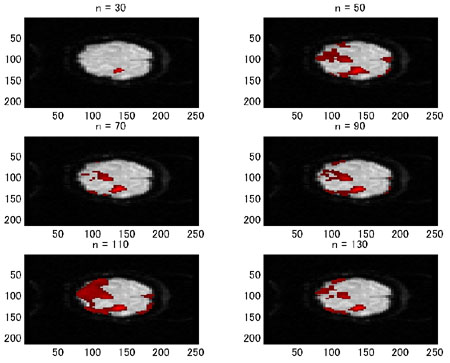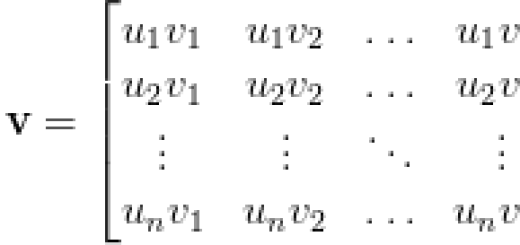Looking at how the brain works in real-time
Re-posting this article on real-time functional MRI I wrote several years ago.
The technique known as functional magnetic resonance imaging (fMRI) has been extensively used to elucidate the functions of the human brain. Functional MRI provides a “window” where we can see what part of the brain is involved when we think, smell, taste, feel, or move. These windows are the activation maps indicating sites in the subject’s brain that are activated while the subject performs a given task and are usually obtained after analyzing voluminous amount of functional MRI images.
In a typical fMRI scanning session, the accumulated data can reach several hundreds of brain image volumes. The computational demand is usually very high that functional analyses are often delayed and activation maps are obtained long after the scanning session is completed and the subject is no longer inside the MR scanner. In most cases, this delay in analysis is often not an issue. However, the problem arises when after the analysis the data turned out to be corrupted with significant noise that no reliable activation could be extracted resulting in a waste of scanning time and delaying progress in research. To avoid this, the ideal scenario would be to “know” the results while the subject is still inside the MR scanner and before the experiment is concluded. This scenario calls for the immediate analysis of fMRI images as they are acquired and thus motivated the development of the real-time analysis of fMRI data.
 |
| Fig. 1. The conceptual framework of the real-time functional magnetic resonance imaging system composing of an MR scanner, a data storage device, and a computational server. |
The real-time analysis of fMRI data offers several advantages both for theoretical studies and clinical applications. With real-time analysis, monitoring the task performance of the subject and the resulting quality of the acquired data can be easily achieved. It could also make functional mapping experiment more interactive by allowing ongoing paradigms to be altered if a need arises, making fMRI a more flexible tool for neurological investigations. Moreover, it also enables researchers to locate regions of interest that could be used for the next experimental run.
Fully real-time fMRI analysis could also provide an immediate feedback of the subject’s “ongoing” brain activity and thus enabling researchers to investigate the dynamical nature of the human brain. From a clinical perspective, some applications of real-time fMRI could be in pre-surgical planning. For instance, a surgeon operating a lesion could use functional brain studies to minimize the extent of the damage that could result in the operation. Real-time results of these functional studies are therefore critical. In spreading disorders such as Jacksonian seizures or migraine, the possibility of observing activation maps of such phenomena in real time could lead to a better understanding of the spreading mechanism of the disorder as well as to the development of therapeutic interventions to arrest the symptoms progression.
By providing an immediate feedback of the patient’s brain activity, real-time fMRI could also be used in assessing recovery treatment after a loss of, say for example motor function. These and several other potential applications are the compelling factors that motivate us to develop a fully real-time analysis system for fMRI time series. In simple terms, the research’s goal is to see the activation map unfolds in time as the subject performs the designated task, thereby enabling us to look how the brain works in real time.
 |
| Fig. 2. The above schematic shows the computational flowchart of the real-time analysis of fMRI time series, which starts immediately after an image is acquired and ends after the statistical parametric map is updated. The steps are repeated when a new image data is acquired. |
In order to achieve this goal, we need to overcome two main difficulties, namely: 1) the need for a general real-time parametric analysis tool and 2) the computational requirement. The former requires analysis tools that we can use in real-time to be able to process fMRI data in the same rigor as that of offline analysis methods, while the latter demands computational prowess that can cope up with the needed computations. To overcome the first problem, we develop an algorithm to estimate the coefficients of general linear model (GLM), a versatile tool for parametric analysis, using an orthogonalization procedure. The algorithm offers several advantages including incremental estimation, minimal use of memory during the estimation process, fixed computational cost for each estimate update, among others, making it highly suitable for real-time applications. Using this as the basis for general real-time parametric analysis, a real-time analysis system is developed. To achieve results of comparable quality to that obtained by offline processing methods, realignment for motion correction and smoothing operations are incorporated into the computational pipeline. To meet the computational demand, we employ inexpensive and economically viable cluster of personal computers or PC cluster. The result is the real-time fMRI analysis system schematically shown in Fig. 1.
 |
| Fig. 3. Real-time activation maps at different time steps (n = 30, 50, 70, 90, 110, and 130) of a slice containing the primary motor cortex. |
The system is composed of an MR scanner subsystem for data acquisition and paradigm control, a computational server (a PC cluster) for real-time fMRI data analysis, and a storage device for storing data. For offline operation, the MR scanner subsystem sends data to the storage device where the computational server can access for future analysis. For real-time operation, the MR scanner subsystem sends the data directly to the computational server for immediate processing. With this system, we achieved a fully real-time analysis of high spatial resolution whole-brain fMRI time series. The analysis includes realignment, smoothing, GLM estimation, and statistics computation (Fig. 2). All computations were performed immediately after the acquisition of each image volume and completed within TR set to 3 s. Real-time activation maps at different times for a slice containing the primiary motor area are shown in Fig. 3.
The real-time analysis system is designed such that the computational server does not have to be in the same site as the MR scanner. The idea is for imaging facilities that do not have a dedicated computational facility to be able to use remote computing resources on demand. This means that when needed the MR scanner subsystem could connect to a remote computational server via a high speed network and still be able to perform the required real-time operations. One way to realize this is to employ GRID technology. This will be the next step we will be taking, that is, the development of GRID-enabled real-time fMRI analysis system. The motivation is to make imaging facilities real-time capable by simply connecting to the GRID.


